“Noah… Prepared an Ark to the Saving of His House”
Moses 8:19–30; Genesis 6–9; 11:1–9
Links to the reading in the SAB: Genesis 6, Genesis 7, Genesis 8, Genesis 9, Genesis 11
LDS manual: here
Background
This lesson is about two of God’s worst atrocities: drowning almost all the people and animals in the world in a flood when they got out of his control, and scrambling humanity’s languages when they committed the sin of cooperating on a building project.
I’m a bit stuck as to how to present this lesson. Do I make it a straight takedown of biblical literalism? That’s easy and fun. And not only that, the literal approach is the one that’s taken by the LDS Church in its official instruction manuals, so it’s pertinent besides. On the other hand, do I take the view of Very Sophisticated Theologians and Apologists, and go for a figurative view? That has the benefit of being true, but has the unfortunate effect of negating the entire basis for the Gospel, as we saw in a previous lesson.
We’re at a weird point in LDS doctrine as of last week. That’s when the First Quorum of the Anonymous released its ‘Book of Mormon and DNA Studies‘ essay, which uses sources that acknowledge that people immigrated to the American continent 10,000 years ago, which is a few thousand years before Adam and Eve. So what’s the story here; thousands of years, or millions?
What’s happened is that, because of the Church’s failure to clarify its own doctrine, two parallel streams of doctrine have grown up in the last several decades: a literal one that’s taught in Sunday School, and a figurative/metaphorical one that’s accepted in apologetic circles and on the Internet. The parallel approach has worked out well for the Church; they don’t have to go out on a limb officially, and everyone gets to believe what they want. It works for them, as long as — like we learned in Ghostbusters — you never cross the streams. Because crossing the streams is Bad. But in the DNA essay, what we saw is the Church crossing the streams.
It was inevitable that they’d have to do this, as science has been putting pressure on the literal story for a couple of centuries. Something was going to crack. But it does reveal the Mormon Church’s doctrinal incoherence, and this causes headaches for a diligent Gospel Doctrine teacher.
Not for me, though. In this lesson, I’m taking an axe to the literal view because it’s not the dead horse it’s made out to be. We live in a world where a sizeable number of adult humans are willing to say that they believe the story of Noah’s Ark to be “literally true” — 61 percent, according to a 2004 Gallup poll of American adults. That’s right; three out of five.
Even just last week, we saw a debate between Bill Nye, a guy of science, and Ken Ham, looking lost with only the Bible for support — poor sap. Not only does Ham cherry-pick the evidence that leads to his worldview, he admitted that he would never change his mind about the Bible.
The fact is, many religious organisations are promoting the idea that Noah’s Ark was a true, literal, non-allegorical, and (importantly) global event that took place about 2350 BCE. And one of them is the LDS Church, which as of today continues to teach — in its official lesson manuals, on its website, in its official magazine, and in General Conferences — that God once committed the most complete act of genocide ever recorded upon humankind.
We would now like to turn the time over to Brother Gervais for the story of Noah.
Main points from this lesson
A global flood is implausible.
Many others have done detailed takedowns of the Flood, so I’ll just link to them here, in the order that I like them:
- Talk Origins: http://www.talkorigins.org/faqs/faq-noahs-ark.html
- Rational Wiki: http://rationalwiki.org/wiki/Global_flood
- Biblical Nonsense: http://www.biblicalnonsense.com/chapter6.html
- National Center for Science Education: http://ncse.com/cej/4/1/impossible-voyage-noahs-ark/
- Skepdic: http://www.skepdic.com/noahsark.html
And of course, the Brick Testament.
Here’s a quick run-through of my favourite points:
• The Ark, as described, is way too small
Show the class this graphic from the manual, which even as a TBM I couldn’t believe they printed.
Ask: Would you be able to fit millions of animal species in there? Including millions yet unclassified? In a ship half the size of an ocean liner? (Unless you think they speciated wildly after the flood, but wait, no, that would be evolution.)
Show the class this video by the always-wonderful NonStampCollector, detailing the gargantuan (but not very realistic) labours of Noah.
• Parasites!
You can’t just save all the nice animals; you also have to rescue the parasites. That means Noah and family would have had to be infected with every parasite that humans are prone to.
How many parasites are we talking about? Well, according to the Wikipedia page, about 73! Yep, they’d have been crawling with liver worms, tapeworms, flukes, bedbugs, pubic lice, and fleas. They would scarcely have a healthy eye, ear, urinary tract, or crotch among them! And this would be at the same time that they had to be at the peak of their reproductive fitness, in order to repopulate the earth.
• Other problems
A tiny crew of eight people would have had to do the work of many zoos, and do it all with zero animal deaths.
What about plants? Keeping them underwater for a year would have killed them. It’s a bit moot, though — there are trees just under 10,000 years old, and they show no signs of a flood.
After the flood, the animals would have had to make their way from (apparently) Turkey, the ark’s landing site, to wherever they would eventually live. Cold-weather animals wouldn’t have done well migrating from Turkey. And apparently they didn’t have to, since bones of every animal on earth don’t appear along the way.
Perhaps God teleported them to their new abodes magically. In fact, magic could explain a lot in this story. Whenever I discuss this with creationists, they always fall back on magic eventually. In which case, wouldn’t it be better to go with the magic from the start? Why try to make it sound sciencey, and then revert to magic? Just start with magic! It would save a lot of time!
A local flood doesn’t fit the requirements of the text.
Could we circumvent the plausibility problem by assuming the Flood was a local event, as LDS apologists try to? Unfortunately for them, no. That would mean that the Flood no longer fits the script.
Gen 7:19: All the mountains under heaven were covered with water.
Gen 7:21: All flesh died that moved upon the earth. (Watch as apologists attempt to redefine the word earth. Good one.)
Gen 9:13–16: After the flood, God sent a rainbow as a promise that he would not make another flood like that. But there have been plenty of localised floods since.
There’s a hand up. Yes, Brother Hickenlooper?
Brother Hickenlooper: I was always taught that the whole earth had to be under water because the Flood was the earth’s baptism. Did the church ever really teach that?
Indeed they did, Brother Hickenlooper. From the church essay on “Noah”.
What is the symbolism of Noah and the flood?
God uses symbols to teach gospel truths. In the New Testament, Peter explained that the flood was a “like figure” or symbol of baptism (1 Peter 3:20–21). Just as the earth was immersed in water, so we must be baptized by water and by the Spirit before we can enter the celestial kingdom.
The Flood is at the wrong time.
There were contemporary cultures who didn’t notice the global flood.
A Flood would be the action of an immoral being.
Okay, so the Flood is fictional. No need to get worked up over it. It’s supposed to be an allegory of God’s love, although not from the perspective of everyone who drowned, including children and babies (born and unborn). But all this tells us is that, even as portrayed by his followers, the god of the Bible is a murderous bully who kills men, women, and children in order to fix problems that he created.
Ask: What kind of parent would decide that the correct way to deal with his errant children is to drown them? This is what we should be thinking when we hear “Parenting the Lord’s Way”.
Ask: Why would anyone worship such a being?
Answer: Under duress, Stockholm syndrome.
The Tower of Babel is a myth.
Ah, now we’re in my area. At one point, I was a young linguist, and a true believing Mormon (or TBM). How did I reconcile the two? By not thinking about it very carefully!
No serious linguist would accept the story of the Tower of Babel. You’d have to believe that all humans were speaking the same language after the Flood (so around 2300 BCE).
In fact, the Bible contradicts itself — Genesis 10 says that there were multiple languages, but in the next chapter, there was only one.
In reality, there’s no evidence of any kind of language bottleneck, where everyone is speaking the same language around 2300 BCE. Human languages have been diversifying since people started speaking.
At one point, there may have been one human language, but this would have been maybe 60,000 years ago, when early humans first left Africa.
We know quite a bit about one language family in particular: Proto-Indo-European. This is the language that led to many languages spoken today, like English, Greek, Russian, and even Persian and Sanskrit.
Even though it’s hard to tell exactly when things happened so long ago, we do know that Proto-Indo-European had already split off from its sister languages somewhere between the 4th millennium and the 7th millennium BCE — about 2 to 5 thousand years before Babel. In other words, there was no language bottleneck at the time of Babel.
It’s pretty clear that Babel is a myth that’s intended to explain the diversity of languages in the world, but it’s not the only one.
- In African tales, a famine causes the people to wander the earth jabbering nonsense.
- In the Dreamtime legend of the Gunwinggu of Australia, a goddess gives each of her children a language to play with.
- And for the most plausible explanation of language diversity, a Native American legend has it that disagreement between people caused them to move apart and speak differently.
By comparison, the Abrahamic God just looks petty and insecure, condemning people for working together. One of the best things for advancing our knowledge is collaboration.
Ask: Why might working together help to increase knowledge?
Answers:
- Groups of people working together can do more work than one person can do alone.
- One person can be subject to bias, but getting more people to review the results helps to control for that; not everyone will have the same biases.
- If one person uses deception, other people can try to replicate their results, and they’ll likely be caught. This is a powerful motivator to stay honest.
Working together in science sometimes takes the form of peer review. Peer review helps to correct for error, bias, and deception. This is why biased and mistaken people (like creationists and pseudo-scientists) despise peer review, claiming it represents a conspiracy against them.
Mormons have to take the Tower of Babel story at face value.
I mentioned that, as a young linguist, I didn’t think too much about the Babel story. I took it as largely allegorical, or as a primitive explanation.
That was to change on one of my readings through the Book of Mormon, which relates the story of the brother of Jared. He’s meant to have been at Babel in a very non-allegorical sense. Like many Mormons (and Christians), I habitually dismissed the parts of the Bible that seemed fantastical, but dismissing the Book of Mormon as non-literal is much more difficult. It’s not intended to be read as allegory, at least according to the standard line you get from church. (Then again, neither is the OT, so what did I know?)
So here I had two facts that couldn’t be reconciled:
- The Book of Mormon told a story that was intended as factual.
- The story was clearly wrong.
This was quite jarring, and I think it was the first real earthquake that led to my deconversion. After the fall of Babel, it became much easier to see how the Church got things wrong, including history, dinosaurs, geology, linguistics, and Mesoamerican archaeology. But more on those later.
Additional ideas for study
Man, I’m glad the creationist crazies haven’t launched into linguistics with the same fervour with which they’ve besieged biology. Otherwise, we’d have the theory of Wrathful Dispersion.

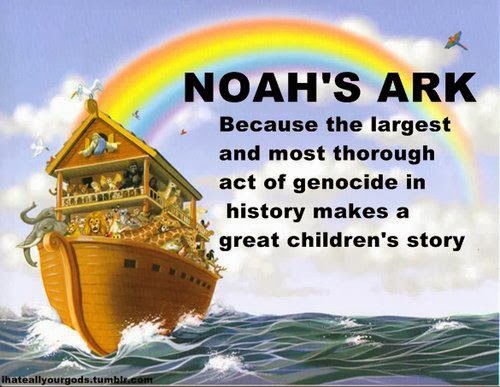
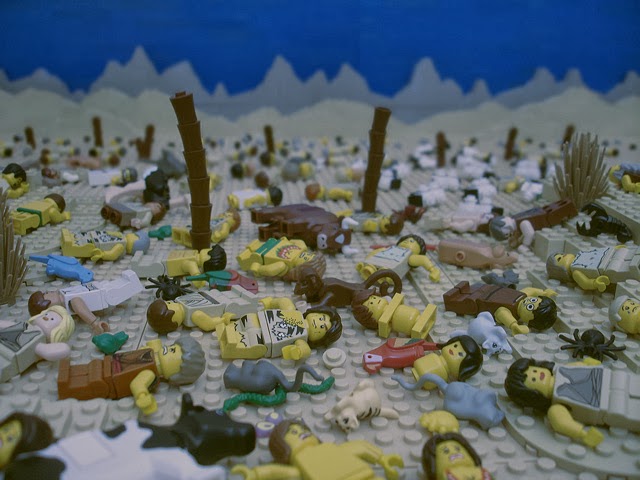




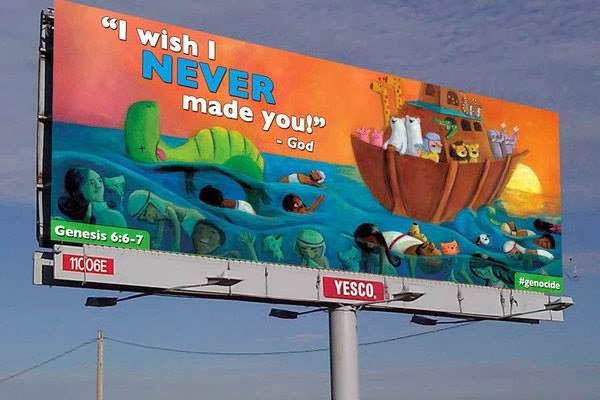
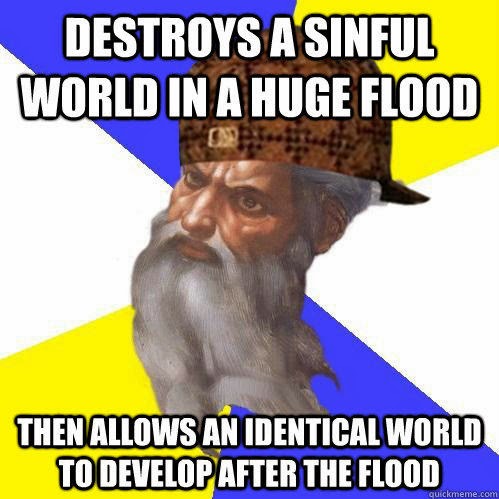
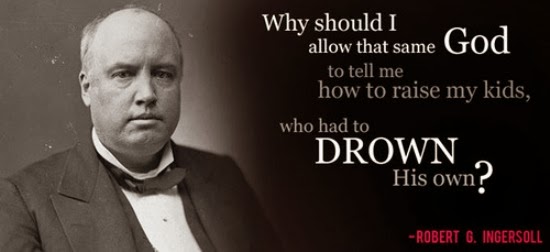

Recent Comments